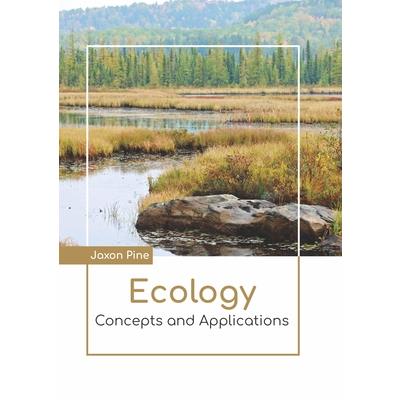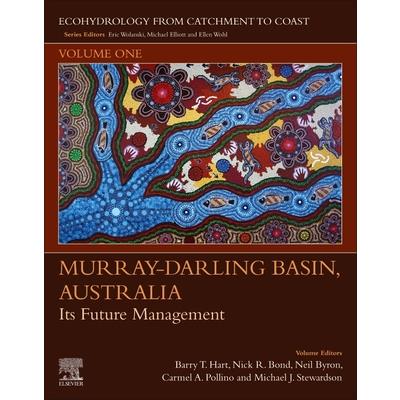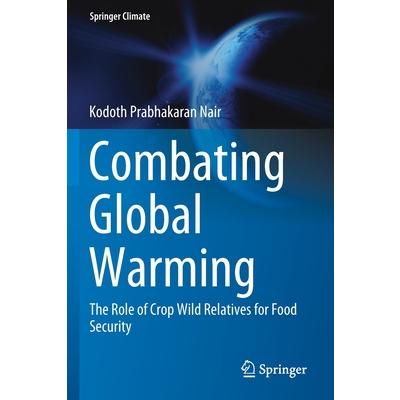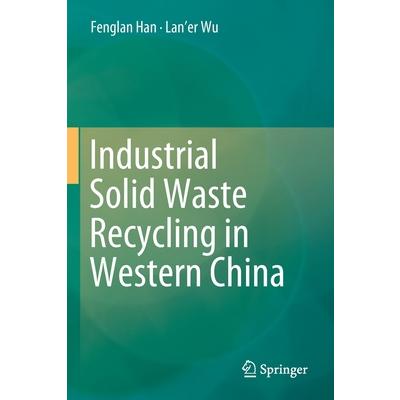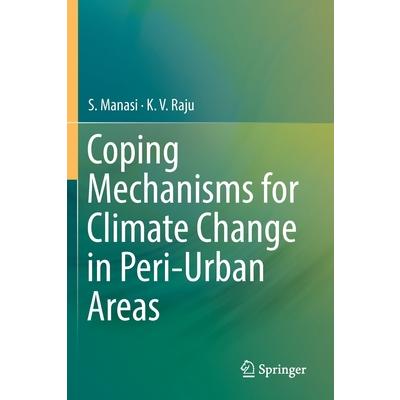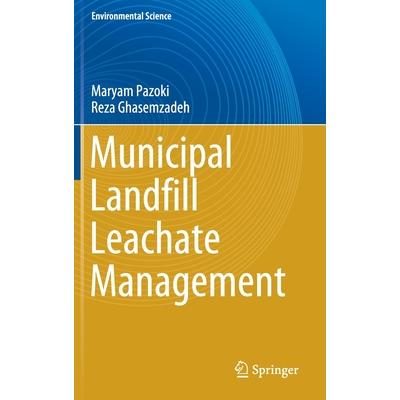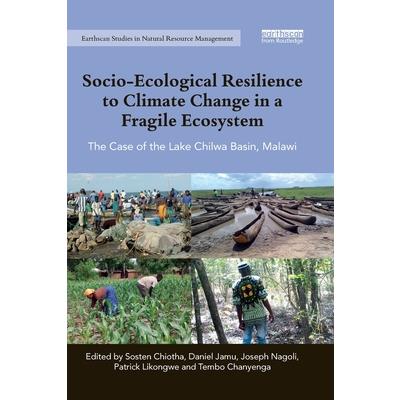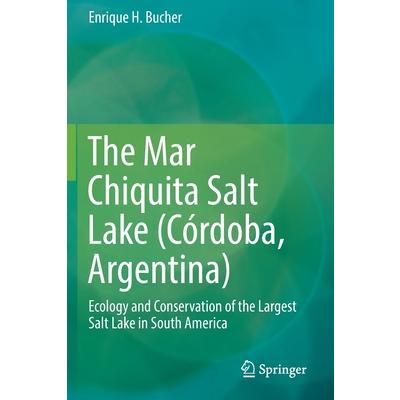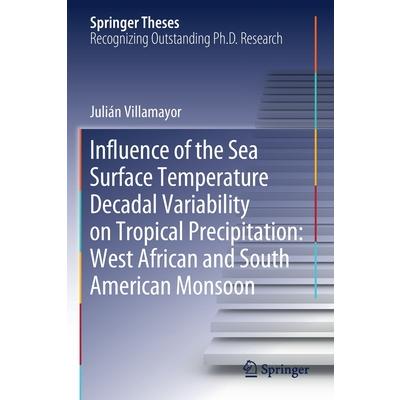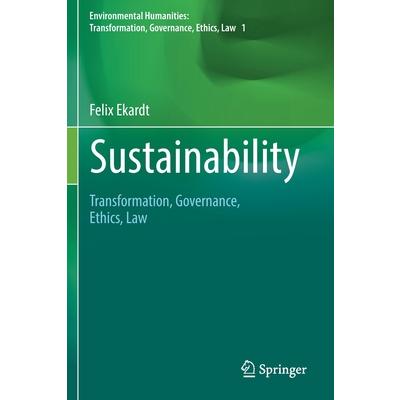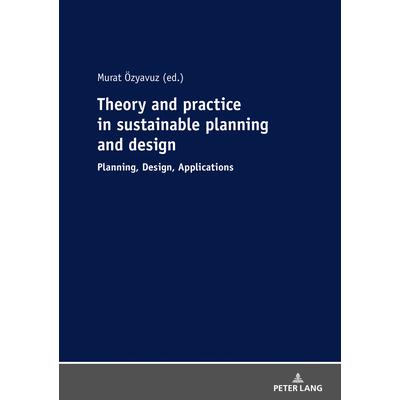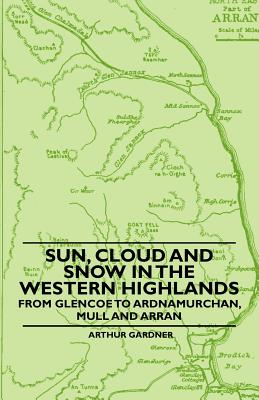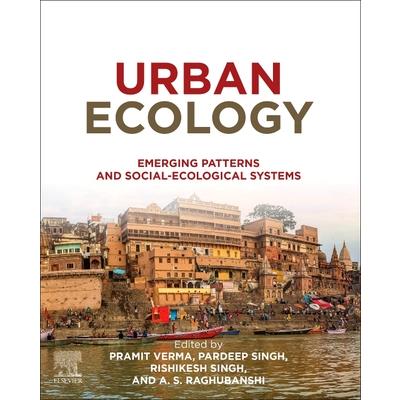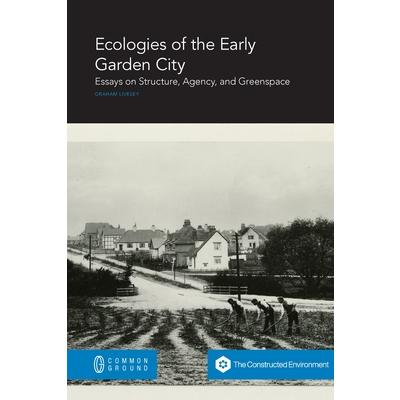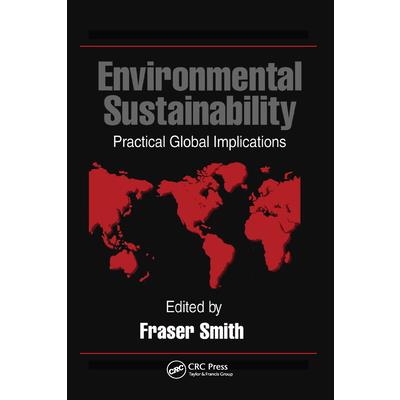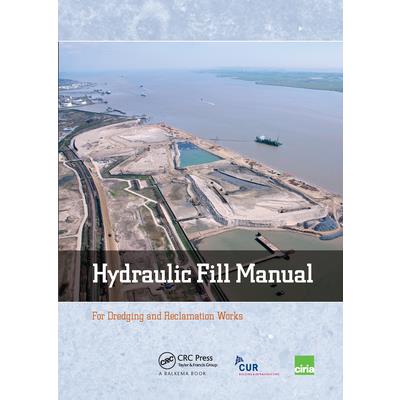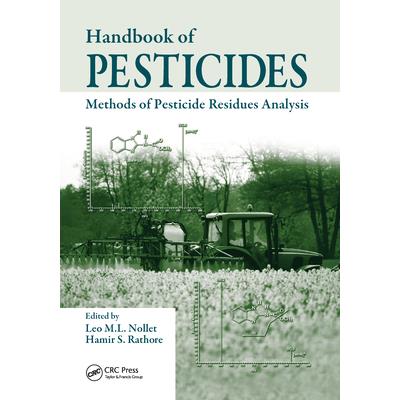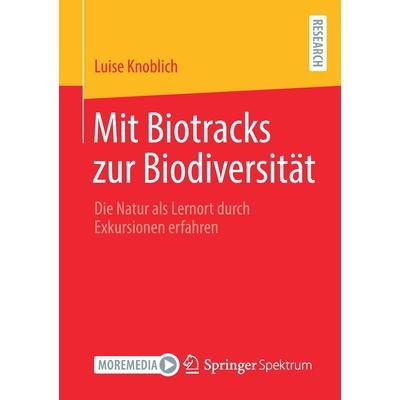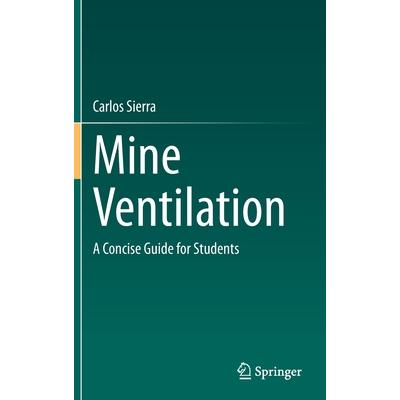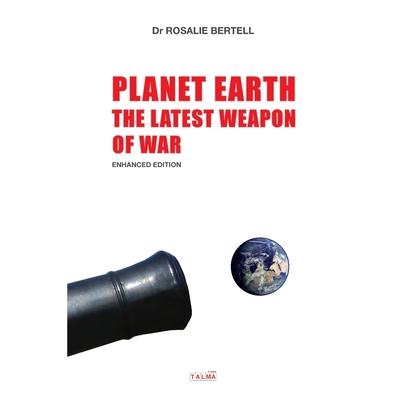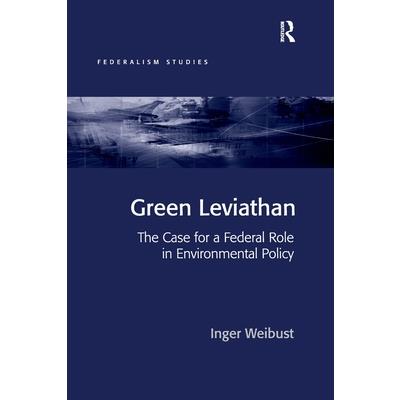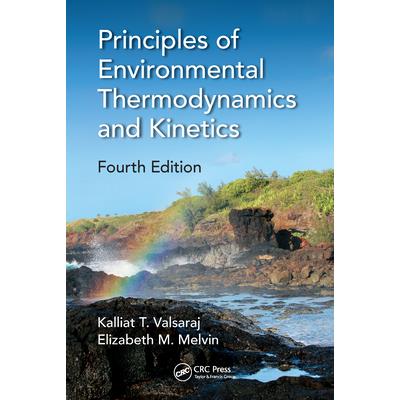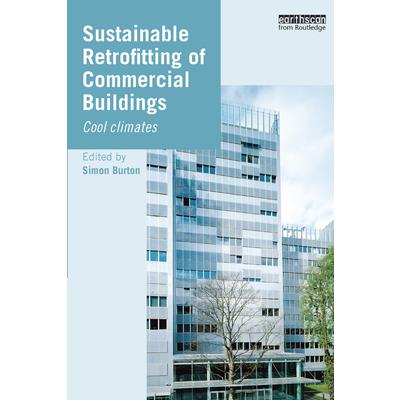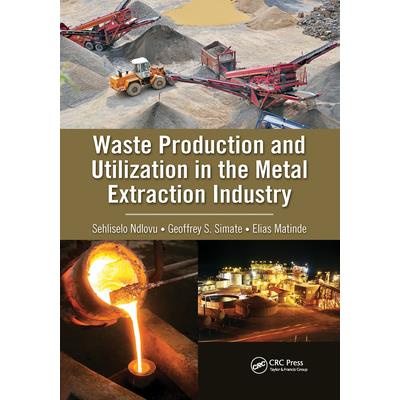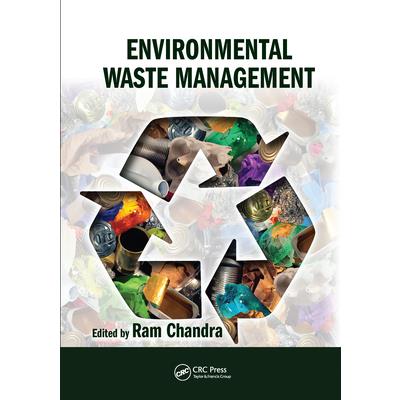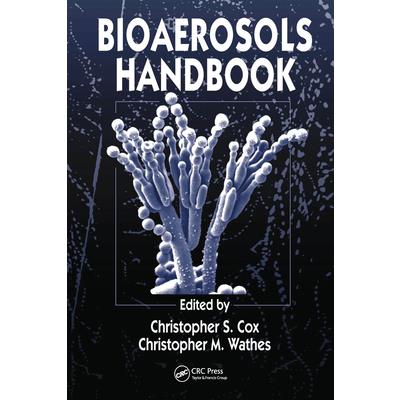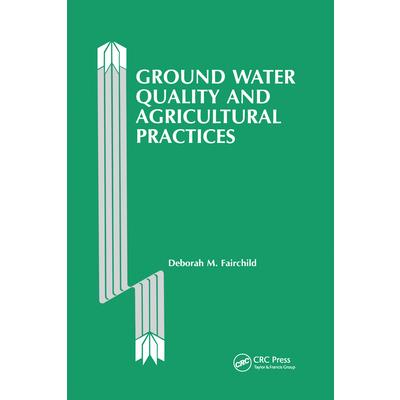Viruses: More Friends Than Foes (Revised Edition)
Coronavirus, AIDS, and Ebola: Viruses are normally defined as pathogens. Most viruses are, however, not enemies or killers. Well-known virologist and cancer researcher Karin Moelling describes surprising insights about a completely new and unexpected world of viruses. Viruses are ubiquitous, in the oceans, our environment, in animals, plants, bacteria, in our body, even in our genomes. They influence our weather, can contribute to control obesity, and can surprisingly be applied against threatening multi-resistant bacteria. The success story of the viruses started more than 3.5 billion years ago in the dawn of life when even cells did not exist. They are the superpower of life. There are more viruses on earth than stars in the sky. Viruses are everywhere. Some of them are incredibly ancient. Many viruses are hundredfold smaller than bacteria, but others are tenfold bigger and they were discovered only recently -- the giant viruses, even deep within the permafrost where they were reactivated after 30,000 years.The author talks about a completely new world of viruses, which are based on the most recent, in part her own research results. Could viruses have been our oldest ancestors? Have viruses even 'invented' social behavior, do they lead to geniuses such as Mozart or Einstein -- or alternatively to cancer? They can help to cure cancer. In this book, the author made a clear distinction between what is fact and what is her vision. This book is written for a general audience and not just for the experts. Its aim is to stimulate thinking, and perhaps to attract more young scientists to enter this field of research.This revised edition is brought up to date by a new chapter on the SARS-CoV-2 pandemic. Related Link(s)
Essential Concepts of Global Environmental Governance
This book is a timely and up-to-date compilation of the main pieces of the global environmental governance puzzle. Innovative thinking and high-profile expertise come together to create a volume that is accessible to students, scholars and practitioners alike.
Ecology: Concepts and Applications
Ecology is a biological branch that is concerned with the study of the interactions between organisms and their environment. It primarily focuses on the biotic and abiotic components of the organisms' environment. Ecology studies the distribution, biodiversity, biomass and populations of organisms. It also focuses on the competition and cooperation among species. Concepts from this field are often applied in areas such as wetland management, conservation biology, city planning, community health, applied science, human social interaction, etc. It is also applied in natural resource management such as forestry, agroforestry and agriculture. Ecology works to explain the movement of energy and materials via living communities, life processes, adaptations and interactions, the successional development of ecosystems, and the distribution of organism's biodiversity in the environment. This book is a compilation of chapters that discuss the most vital concepts in the field of ecology. Such selected concepts that redefine this field have been presented herein. The textbook is appropriate for students seeking detailed information in this area as well as for experts.
Murray-Darling Basin, Australia
Murray-Darling Basin, Australia: Its Future Management is a much-needed text for water resources managers, water, catchment, estuarine and coastal scientists, and aquatic ecologists. The book first provides a summary of the Murray-Darling River system: its hydrology, water-related ecological assets, land uses (particularly irrigation), and its rural and regional communities; and management within the Basin, including catchments and natural resources, water resources, irrigation, environment, and monitoring and evaluation. Additionally, the recent major water reforms in the Basin are discussed, with a focus particularly on the development and implementation of the Basin Plan. Murray-Darling Basin, Australia: Its Future Management then provides an analysis of the next set of policy and institutional reforms (environmental, social, cultural and economic) needed to ensure the Basin is managed as an integrated system (including its water resources, catchment and estuary) capable of adapting to future changes. Six major challenges facing the Basin are identified and discussed, particularly within the context of predicted changes to the climate leading to an increased frequency of drought and a hotter and dryer future. Finally, a 'road map' or 'blueprint' to achieve more integrated management of the Basin is provided, together with some 'key lessons' of relevance to others involved in the management of multijurisdictional river Basins.
Combating Global Warming
This book critically examines the environmental hazards posed by global warming with regard to future food security, which will depend on a combination of stresses, both biotic and abiotic, imposed by climate change; variability of weather within a growing season; and the development of cultivars that are more sensitive to different ambient conditions. Furthermore, the ability to develop effective adaptive strategies which allow these cultivars to express their genetic potential under changing climate conditions will be essential. In turn, the book investigates those plant species which are very closely related to field crops and have the potential to contribute beneficial traits for crop improvement, e.g. resistance to a wide range of biotic and abiotic stresses, enriching the gene pool, and ultimately leading to enhanced plant yield, known as "Crop Wild Relatives" (CWRs). CWRs hold tremendous potential to sustain and enhance global food security, contributing to human well-being. Accordingly, their development, characterization and conservation in crop breeding programs have assumed great practical importance.Professor Kodoth Prabhakaran Nair is an internationally acclaimed agricultural scientist, with over three decades of experience in Europe, Africa and Asia, holding some of the most prestigious academic positions, including the National Chair of the Science Foundation, The Royal Society, Belgium. A Senior Fellow of the world renowned Alexander von Humboldt Research Foundation of The Federal Republic of Germany, he is best known, globally, for having developed a revolutionary soil management technique, known as "The Nutrient Buffer Power Concept", which, while questioning the scientific fallacies of the highly soil extractive farming, euphemistically known as the "green revolution", has opened up an alternative path for sensible and scientific soil management
Trait矇 矇l矇mentaire de la peinture
L矇onard de Vinci (1452-1519) n'矇tait pas seulement un homme d'esprit universel, ? la fois artiste, scientifique, anatomiste, peintre, sculpteur, architecte, botaniste et philosophe. Il a aussi beaucoup 矇crit. Parmi ses oeuvres, il propose dans son Trait矇 de la Peinture, rest矇 inachev矇, une triple d矇finition de la perspective: 1): perspective lin矇aire (diminution de la taille des objets proportionnellement ? leur distance ? l'observateur); 2): perspective des couleurs (att矇nuation des couleurs proportionnellement ? cette distance); 3): perspective d'effacement (diminution de la pr矇cision des d矇tails). Son 矇l癡ve Francesco Melzi, chercha jusqu'? sa mort ? reconstituer le Trait矇 de la peinture que L矇onard de Vinci avait projet矇 toute sa vie de faire publier. Son manuscrit, un travail tr癡s avanc矇, mais inachev矇, selon Andr矇 Chastel, est aujourd'hui conserv矇 ? la Biblioth癡que du Vatican sous la r矇f矇rence Codex Urbinas latinus 1270. Il compila pour cela les aspects de son travail sur l'anatomie, la lumi癡re et les ombres, les drap矇s, les paysages. Une premi癡re 矇dition de ce vaste chantier parut en 1651, en italien, puis en fran癟ais. Charles Le Brun pr矇senta l'矇dition fran癟aise du Trait矇 de la peinture (Trattato della pittura), illustr矇 de 58 figures du c矇l癡bre Nicolas Poussin, aux membres de l'Acad矇mie royale de peinture et de sculpture comme un ouvrage d矇sormais de r矇f矇rence. La pr矇sente 矇dition est 矇tablie ? partir de cette version.
Paleoecological Research on Easter Island
Paleocological Research on Easter Island: Insights on Settlement, Climate Changes, Deforestation and Cultural Shifts examines the area's climatic and ecological history, a topic not usually addressed in other literature. The book provides a thorough and synthetic account of all paleoecological works developed to date, including the latest discoveries. Finally, it attempts to match paleoecological evidence with the results of other disciplines creating a multidisciplinary framework. This approach to the field is ideal for researchers, university professors and graduate students in a varied range of disciplines and subdisciplines, including ecology, paleoecology, paleoclimatology, biogeography, sedimentology, and paleontology. Users will find synthesized information on Easter Island from the last millennia that will help pave the way towards an integrated interdisciplinary vision of the island's environmental-ecological-cultural system as a complex functional unit. Human and environmental deterministic views are avoided and the Easter Island enigmas are analyzed under a holistic perspective of continuous feedbacks and synergies among the different components of the system.
Industrial Solid Waste Recycling in Western China
Combines for the first time the up-to-date research developments and practical cases of industrial solid waste recycling in China's western regionsProvides abundant information on massive solid wastes such as fly ash, magnesium slag, manganese slag, acid sludge of lead and zinc metallurgy Based on the authors' research experience and includes the original research results which have not been disseminated before
Coping Mechanisms for Climate Change in Peri-Urban Areas
This book discusses the dynamics and resource management qualities of the peri-urban interface to address climate change consequences, focusing on the peri-urban region of the global city of Bengalaru. In 5 chapters, the authors document the unique challenges experienced in peri-urban areas, including soil-water vegetation dynamics, local and regional impacts on water bodies (surface and groundwater), food production issues, and the inhibited adaptive capacity of local communities. The book also provides knowledge on implementations of environmental management by local institutions, government interventions that have acted as catalysts in promoting community based adaptation strategies, and the physical, social and economic aspects of rural-urban dynamics. The book not only adds to the scarce existing literature on peri-urban contexts, but also addresses the role of culture in protecting ecological landscapes and how traditions play an important role in coping with climate change. Furthermore, the authors expand on these climate change coping mechanisms in peri-urban areas, taking into account local cultural factors and interesting governance interventions in the context of health. The book will be of interest to planners, policy makers, and students and researchers engaged in rural-urban dynamics and climate change adaptation.
Municipal Landfill Leachate Management
This book is divided into seven chapters, which address various leachate landfill management issues such as the quality, quantity and management of municipal landfill leachate, together with new methods. There are many methods available for the treatment and management of municipal landfill leachate. The waste management methods presented here can be applied in most third-world countries, due to the lack of waste separation and high organic content of waste. The book provides descriptions and a hierarchy of waste management, reviews the history of solid waste disposal, and covers a range of topics, including: leachate and gas generation in landfills; natural attenuation landfills; landfill site selection; leachate and stormwater management, collection and treatment; landfill gas management; landfill cover requirements; leachate collection; types of natural treatment systems; and design procedure and considerations. In closing, it provides an overview of the current solid waste management status in Iran.
Green Photocatalysts
This book presents advanced photocatalytic technologies for wastewater treatment. The fabrication, surface modification, roles and mechanisms of green catalysts are detailed. The catalysts include nanostructured catalysts, semiconductors, metal and non-metal doped catalysts, surface plasmon materials, graphene oxide-based materials, polymer-based composite materials, heterogenous type I and type II catalysts.
Sustainable Solutions for Urban Water SecurityInnovative Studies
Explores in detail new paradigms of urban water security in changing context Presents a wide range of sustainable solutions to address the water scarcity problem, including localized sustainable solutions, innovations, computer models and simulations, capacity building, stakeholder analysis, and sustainable solutions case studiesOffers an analysis of the potential of the role of recent innovations such as frugal innovation, smart water, etc. Offers an analysis of the potential of the role of space technology and the latest water related techniques for water security
Socio-Ecological Resilience to Climate Change in a Fragile Ecosystem
The Lake Chilwa Basin Climate Change Adaptation Programme was a seven-year research and development programme in Malawi that concluded in March 2017. The programme was designed to protect the livelihoods of the population and enhance resilience of the natural resource base upon which it depends. The Lake Chilwa Basin is an important wetland ecosystem which is a designated Ramsar Site under the Ramsar Wetland Convention and a Man and Biosphere Reserve designated by UNESCO. This book provides a review of the research and programme interventions done based on the ecosystem approach (EA), a strategy for the integrated management of land, water and living resources. This is designed to promote biodiversity conservation and sustainable use in an equitable way in its implementation of mitigation and climate change adaptation interventions. It is shown how: local and district institutions were strengthened to better manage natural resources and build resilience to climate change; cross-basin and cross-sector natural resource management and planning for climate change throughout the Basin were built; household and enterprise adaptive capacity in Basin hotspots was built; and improved forest management and governance contributed in mitigating the effects of climate change. The study followed all the twelve key EA principles with involvement of all key stakeholders. It is one of the first programmes to apply EA on such a wide temporal and spatial scale and provides key lessons to be learned for the protection of other fragile ecosystems in an era of climate change.
Ecosystem-Based Management, Ecosystem Services and Aquatic Biodiversity
Aquatic ecosystems are rich in biodiversity and home to a diverse array of species and habitats, providing a wide variety of benefits to human beings. Many of these valuable ecosystems are at risk of being irreversibly damaged by human activities and pressures, including pollution, contamination, invasive species, overfishing and climate change. Such pressures threaten the sustainability of these ecosystems, their provision of ecosystem services and ultimately human well-being.Ecosystem-based management (EBM) is now widely considered the most promising paradigm for balancing sustainable development and biodiversity protection, and various international strategies and conventions have championed the EBM cause and the inclusion of ecosystem services in decision-making. This open access book introduces the essential concepts and principles required to implement ecosystem-based management, detailing tools and techniques, and describing the application ofthese concepts and tools to a broad range of aquatic ecosystems, from the shores of Lough Erne in Northern Ireland to the estuaries of the US Pacific Northwest and the tropical Mekong Delta.
Gut Remediation of Environmental PollutantsPotential Roles of Probiotics and Gut Microbiot
Chapter 1: Gut microbiotaSummary: The gut is a huge complex ecosystem where microbiota, nutrients, and host cells interact extensively, a process crucial for the gut homeostasis and host health. The gut microbiota has many functions including metabolic, barrier effect, and trophic functions. Hence, many diseases have been associated to impairment of the gut microbiota. This part provides in depth view of the close relationship between gut microbiota, health and disease.1.1Gut microbiota1.2Gut microbiota balance and health1.3Gut microbiota dysbiosis and diseaseChapter 2: Probiotics and gut microbiotaSummary: Probiotics, "live micro-organisms", when consumed in adequate amounts, positively modulate the gut microbiota to prevent or treat somediseases. This part gives the interaction between probiotics and gut microbiota contributing to host health.2.1Probiotics2.2Probiotics and gut microbiota2.3 Probiotics and healthChapter 3: Probiotics, gut microbiota and heavy metalsSummary: The accumulation of heavy metals disrupts the structure of gut microbiota, causing damage to organs such as liver and kidney. Probiotics effectively protect against heavy metals toxicity by facilitating heavy metals excretion and mediating gut microbiota.3.1Common heavy metals (Cr, Cd, Hg, Pb, As, Cu, MeHg)3.2Other representative metals (Al, Zn, Ni)Chapter 4: Probiotics, gut microbiota and pesticidesSummary: Various pesticides lead to adverse effects on human health, such as oxidative stress and metabolism disorder of the gut microbiota. Probiotics protect against pesticides-induced oxidative stress and downstream cellular damage by enzymatically degrading pesticides, reducing the absorption of pesticides and stimulating host's own immunity.4.1Organophosphorus pesticides (chlorpyrifos, malathion, diazinon, glyphosate)4.2Organochlorine pesticides (pentachlorophenol, permethrin)4.3Other pesticides (imazalil, carbendazim)Chapter 5: Probiotics, gut microbiota and antibioticsSummary: Antibiotics kill a large number of gut microbiota without prejudice, and improve the resistance of pathogenic bacteria such as Clostridium difficile. Antibiotic associated diarrhoea and Clostridium difficile infection can be common following antibiotics treatment. Probiotics have been widely reported to reduce the risks of antibiotics-induced side effects.5.1Antibiotics and gut microbiota5.2Effect of probiotics on antibiotics associated diarrhoea5.3Effect of probiotics on Clostridium difficile infection5.4Potential protective mechanism of probioticsChapter 6: Probiotics, gut microbiota and other persistent organic pollutantsSummary: Polycyclic aromatic hydrocarbons come from grilled or smoked meat and fish that is carcinogenic. The essential oil analogue has significant antimicrobial activity against gut microbiota, which causes abnormal metabolism of gut microbiota. However, probiotics can be used as an alternative method against mutagenesis caused by some persistent organic pollutants. Many food additives can be replaced by lactic acid bacteria.6.1Polycyclic aromatic hydrocarbons (anthracene, naphthalene, phenanthrene, pyrene, benzo(a)pyrene)6.2 Food additives (sweeteners, emulsifiers, flavoring agents, coloring agents)Chapter 7: Gut microbiota, probiotics and biological contaminantsSummary: Some pathogenic organisms can invade the gastrointestinal tract, compete for nutrients and release toxins. Meanwhile, they can inhibit the normal growth and metabolism of the host's native microbiota. Probiotic, such as Lactobacillus rhamnosus, has been reported to detoxify aflatoxin through modulate gut microbiota, fecal excretion in animals.
The Mar Chiquita Salt Lake (C籀rdoba, Argentina)TheMar Chiquita Salt Lake (C籀rdoba, Argentina)Ecology and Conservation of the Largest Salt Lake in South America
This book provides a comprehensive, updated syntheses of all the information available on Mar Chiquita, covering various aspects of the geography, geological history, biology and ecology of the site, as well as a detailed analysis of the current land-use patterns, environmental threats, and conservation issues. Mar Chiquita, located in the province of Cordoba, Argentina, is a protected wilderness area that includes South America's largest saline lake and wetland. It has a very rich bird biodiversity, including three of the six species of flamingos that exist in the world, and high numbers of intercontinental migratory shorebirds. For this reason, the area has been declared an International Site by the Ramsar Convention on Wetlands of International Importance, and also a Site of Hemispheric Importance by the Western Hemisphere Shorebird Reserves Network. Largely unknown until very recently, particularly in terms of the English literature, the site is rapidly gaining international visibility, not only in terms of scientific research, but also as site of interest for the nature lovers around the globe. Written in a language accessible to the non-specialists, the book focuses on integrating the dynamic, functional processes in the ecosystem, while at the same time providing the necessary descriptive information. Accordingly, it is of interest to scientists from diverse disciplines interested in saline wetlands, as well as to students, managers, and the general public.
Influence of the Sea Surface Temperature Decadal Variability on Tropical Precipitation: West African and South American Monsoon
In this book the Sea Surface Temperature (SST) patterns of decadal-to-multidecadal variability observed and simulated by 17 general circulation models (GCMs) are analyzed. Furthermore, their impact on precipitation in West Africa and South America and the atmospheric mechanisms involved are assessed. Through this analysis, the effect of external forcings on these impacts and the relative contribution of decadal-to-multidecadal variability patterns of SST to precipitation are presented in depth. Finally, a humid period in the West African region of the Sahel during the 19th century, previously little documented, is analyzed using an atmospheric GCM.The monsoons of West Africa and South America have shown changes in the timescales of a few decades. Previous work suggests a relationship with patterns of decadal-to-multidecadal variability of SST, such as global warming and the Atlantic and Pacific variability. However, the dynamics underlying this relationship and its simulation by current GCMs had not been addressed in a consistent manner. This is the main motivation of this book. The results of this book not only represent a great step forward in our understanding of the changes in the precipitation regimes of the studied regions, but they can also be of great help for the improvement of decadal prediction systems and the associated social consequences.
Tailings Dam Management for the Twenty-First CenturyWhat Mining Companies Need to Know and Do to Thrive in Our Complex World
This book presents a comprehensive approach to address the need to improve the design of tailings dams, their management and the regulation of tailings management facilities to reduce, and eventually eliminate, the risk of such facilities failing. The scope of the challenge is well documented in the report by the United Nations Environment Program (UNEP) and GRID Arendal entitled "Mine Tailings Storage: Safety Is No Accident," which was released in October 2017. The report recommends that "Regulators, industry and communities should adopt a shared, zero-failure objective to tailings storage facilities..." and identifies several areas where further improvements are required. In this context, the application of cutting-edge risk-assessment methodologies and risk-management practices can contribute to a significant reduction and eventual elimination of dam failures through Risk Informed Decision Making. As such, the book focuses on identifying and describing the risk-assessment approaches and risk-management practices that need to be implemented in order to develop a way forward to achieve socially acceptable levels of tailings dam risk.
Sustainability
This book proposes a holistic transdisciplinary approach to sustainability as a subject of social sciences. At the same time, this approach shows new ways, as perspectives of philosophy, political science, law, economics, sociology, cultural studies and others are here no longer regarded separately. Instead, integrated perspectives on the key issues are carved out: Perspectives on conditions of transformation to sustainability, on key instruments and the normative questions. This allows for a concise answer to urgent and controversial questions such as the following: Is the EU an environmental pioneer? Is it possible to achieve sustainability by purely technical means? If not: will that mean to end of the growth society? How to deal with the follow-up problems? How will societal change be successful? Are political power and capitalism the main barriers to sustainability? What is the role of emotions and conceptions of normality in the transformation process? To which degree are reboundand shifting effects the reason why sustainability politics fail? How much climate protection can be claimed ethically and legally e.g. on grounds of human rights? And what is freedom? Despite all rhetoric, the weak transition in energy, climate, agriculture and conservation serves as key example in this book. It is shown how the Paris Agreement is weak with regard to details and at the same time overrules the growth society by means of a radical 1,5-1,8 degrees temperature limit. It is shown how emissions trading must - and can - be reformed radically. It is shown why CSR, education, cooperation and happiness research are overrated. And we will see what an integrated politics on climate, biodiversity, nitrogen and soil might look like.This book deals with conditions of transformation, governance instruments, ethics and law of sustainability. The relevance of the humanities to sustainability has never before been demonstrated so vividly and broadly as here. And in every areait opens up some completely new perspectives.(Prof. Dr. Dr. h.c. mult. Ernst Ulrich von Weizs瓣cker, Club of Rome, Honorary President)Taking a transdisciplinary perspective, the book canvasses the entire spectrum of issues relevant to sustainability. A most valuable and timely contribution to the debate.(Prof. Dr. Klaus Bosselmann, University of Auckland, Author of "The Principle of Sustainability")This books breathes life into the concept of sustainability. Felix Ekardt tears down the barriers between disciplines and builds a holistic fundament for sustainablility; fit to guide long-term decision-making on the necessary transformation and societal change.(Prof. Dr. Christina Voigt, Oslo University, Dept. of Public and International Law)
World 2.0
This book explores on how the Internet of Things (IoT) will change society by bringing living and non-living things together. The IoT is currently attracting considerable attention, but most of the discussions focus on engineering aspects alone. The IoT, however, is not an extension of traditional engineering, where humans and machines are separated. Instead it connects humans and machines, enabling them to work together as a team: the IoT Connected Society.In traditional engineering, our knowledge and experience of physical and non-living things plays a key role, but such knowledge and experience alone are not enough. We need to introduce life science approaches and integrate them into physical science to really develop the IoT connected society.In addition, the Internet is not only a tool for delivering messages: it is a broader communication tool. In the IoT connected society, living things and non-living things communicate in complex ways. Machines 1. Introduction2. Emerging Industrial Revolution3. IoT: What makes it different from the past revolutions4. World is changing5. Engineering: How It was developed so far6. Humans: Their characteristics7. Value is changing8. Adaptive team organization and management9. Integration of Physical Science and Life Science10. Summary can provide humans with a improved situational awareness and advice, and together they can communicate to develop a better, happier society. Thus, this book makes the case that to make the IoT connected society a reality, we need to integrate the physical and life sciences and develop a new science for the next generation of engineering.
The Un Sustainable Development Goals for the Textile and Fashion IndustryTheUn Sustainable Development Goals for the Textile and Fashion Industry
This book highlights the Sustainable Development Goals (SDGs) as part of the 2030 Agenda for Sustainable Development. These universally agreed-upon aspirational goals for people, the planet, prosperity, and peace will not be achieved without all global and local actors - governments, the private sector, and civil society - playing their part. The SDGs offer a unique opportunity to align existing sustainability initiatives through a common framework and accelerate the industry's efforts to address important challenges in the global textile value chain. Future sourcing models will largely be redefined by how this sector addresses the underlying themes as sourcing countries prioritize the goals and integrate them into their national plans. Stimulating discussion and exploring the many different ways in which the textile and clothing industry can implement the UN SDGs, this informative book provides readers with a comprehensive understanding of the topic, and presents various approaches, including reflexive, empirical, hands-on or applied theoretical.
The Big Thaw
Explores the unprecedented and rapid climate changes occurring in the Arctic environment.Climate change, one of the drivers of global change, is controversial in political circles, but recognized in scientific ones as being of central importance today for the United States and the world. In The Big Thaw, the editors bring together experts, advocates, and academic professionals who address the serious issue of how climate change in the Circumpolar Arctic is affecting and will continue to affect environments, cultures, societies, and economies throughout the world. The contributors discuss a variety of topics, including anthropology, sociology, human geography, community economics, regional development and planning, and political science, as well as biogeophysical sciences such as ecology, human-environmental interactions, and climatology.This book is freely available in an open access edition thanks to Knowledge Unlatched-an initiative that provides libraries and institutions with a centralized platform to support OA collections and from leading publishing houses and OA initiatives. Learn more at the Knowledge Unlatched website at: https: //www.knowledgeunlatched.org/, and access the book online at the SUNY Open Access Repository at http: //hdl.handle.net/20.500.12648/7130.
Homegrown Ecopragmatics
Homegrown Ecopragmatics presents a set of case studies designed to demonstrate how ecopragmatic approaches to solving local environmental problems can be applied. It does so by developing the principles developed in Ecopragmatics (2012), illustrating them through a set of case studies involving solar energy policy, controversies over foresting and grazing rights in Eastern Oregon, water rights, water management and industrial pollution along the Brazos River watershed in Texas, and the mining of the final phosphate reserves in Florida. Each case is developed by developing a background chapter on the larger policy context of the environmental case followed immediately by a specific case controversy involving local groups seeking to locally resolve environmental issues. Cases are developed to highlight the interest of stakeholders and demonstrate how ecopragmatic principles may be employed to resolve local conflict. In three of the cases, ecopragmatic principles proved useful in resolving policy issues. However, in the final case involving phosphate mining, the limitations of ecopragmatic methods is explored to illustrate the circumstances under which consensus and stakeholder involvement must be replaced with a more confrontational approach. These cases have been successfully used in policy classes and based upon the success with which they have been received, they are now more broadly available.
Theory and Practice in Sustainable Planning and Design
Global warming and the resulting climate change affect the cities most. With the decrease of rural areas in recent years, migration to cities has increased. With the rapid migration, an orderly structuring occurred in the cities, and as a result, the quality of the urban environment has started to decrease. In order to mitigate this issue, planners and designers have started to use different approaches to make cities more sustainable and livable. This book contains new theories, approaches and practices that scientists devise for physical planning and design.
Sun, Cloud And Snow in the Western Highlands - From Glencoe to Ardnamurchan, Mull and Arran
This early work will delight lovers of Scotland with its conversational style. It provides a window into a bygone era. Nonetheless, modern day visitors to Scotland will recognise the landscapes and views that Gardner depicts. Over one hundred full page black and white photographs of the region's stunning mountains, valleys, lakes and rivers accompany the text. With chapters on Ballaghulish and Glencoe; Aardgour, Sunart and Ardnamurchan; Mull and Iona; The Hills of Arran. This book contains classic material dating back to the 1900s and before. The content has been carefully selected for its interest and relevance to a modern audience.
Urban Ecology
Urban Ecology covers the latest theoretical and applied concepts in urban ecological research. This book covers the key environmental issues of urban ecosystems as well as the human-centric issues, particularly those of governance, economics, sociology and human health. The goal of Urban Ecology is to challenge readers' thinking around urban ecology from a resource-based approach to a holistic and applied field for sustainable development. There are seven major themes of the book: emerging urban concepts and urbanization, land use/land cover change, urban social-ecological systems, urban environment, urban material balance, smart, healthy and sustainable cities and sustainable urban design. Within each section, key concepts such as monitoring the urbanization phenomena, land use cover, urban soil fluxes, urban metabolism, pollution and human health and sustainable cities are covered. Urban Ecology serves as a comprehensive and advanced book for students, researchers, practitioners and policymakers in urban ecology and urban environmental research, planning and practice.
Diseases and Pests of Ornamental Plants
This vintage book contains comprehensive guide to plant diseases and pests that commonly affect ornamental plants and flowers in the garden by Bernard O. Dodge. Including detailed descriptions as well as step-by-step instructions and helpful diagrams, this fantastic handbook constitutes a must-have for those who grow or wish to grow beautiful and healthy flowers in their gardens. Contents include: "The Control of Plant Diseases", "The Nature of Plant Diseases", "Diseases of Vegetables", "Diseases of Fruit", "Diseases of Rose", "Virus Diseases", "Pests of Fruit and Roses", "Fruit Pests", "Pests of Roses", and "Insecticides". Many vintage books such as this are increasingly scarce and expensive. It is with this in mind that we are republishing this volume now in an affordable, modern, high-quality edition complete with a specially-commissioned new introduction on the history of gardening.
Ecologies of the Early Garden City
This is a study of the inaugural decade (1903-1913) of the first Garden City at Letchworth, in Hertfordshire, employing theories derived from landscape ecology and assemblage theory. The early Garden City movement, as represented by the writings of Ebenezer Howard--particularly his book Tomorrow: A Peaceful Path to Real Reform (1898)--was a concerted attempt to redefine many urban practices. The Garden City strove to unite town and country through the garden, it emerged as a direct response to what were perceived to be the evils of the large industrial cities of the nineteenth century. The field of landscape ecology provides a structural method for examining the behavior of landscapes, by focusing on flow, patch, and boundary systems. These are examined in the urban context, along with the broad topic of agency. Ecological factors are complemented by Gilles Deleuze and F矇lix Guattari's concept of "assemblage," with its emphasis on territorial, cultural, and formal factors. This provides the material for a study of the theories of Ebenezer Howard and the early history of Letchworth Garden City. This includes exploring the central role of gardens, farms, and the greenbelt in the Garden City model, along with agents such as the gardener, farmer, and manager. The Garden City also pioneered modern town-planning, and contributed in such areas as planned neighborhoods, housing design, streetscape composition, architectural controls, controlled growth, urban zoning, greenspace organization, and regional responsiveness.
Voluntary Environmental Management
A shift from government oversight to private sector self-regulation appears to be the future of environmental management. This will be a complex and complicated transition, as individual companies attempt to balance their needs against that of the surrounding communities - and world.Voluntary Environmental Management: The Inevitable Future explores how business and industry are preparing for this dramatic shift in responsibility and accountability.John Morelli pinpoints companies that have already adopted environmental auditing and management tools; examines the deficiencies of government-imposed environmental regulations; and shows how businesses can become more proactive in monitoring and managing their environmentally affective activities.The role of global marketplace forces receives substantial emphasis in Voluntary Environmental Management: The Inevitable Future, especially in light of the widespread international acceptance of new ISO 14000 standards.
Environmental Management
There is a growing need to support undergraduate educators in the development of environmental management educational materials. Recognizing this need, the National Science Foundation funded a College Faculty Workshop on Environmental Management, that was conducted at Utah State University in July and August 1996. The principle objectives of the seminar were (1) to provide a meaningful course which would generate new ideas and innovative educational approaches in the emerging field of environmental management, and (2) to develop an applications-oriented problem workbook which would support undergraduate faculty involvement in the production of course materials. The result of this effort is Environmental Management: Problems and Solutions, an informative text on the essentials of environmental management.More than 200 structured problems presented in the book are meant to elicit a sound understanding of the basics of environmental monitoring, assessment and control. Detailed solutions to each problem, provided with each chapter, will prove useful to both the student and the instructor.This innovative text is a valuable resource for anyone involved in training of engineers and scientists in the field of environmental engineering.
Environmental Sustainability
In 1994, representatives from all over the world met in Costa Rica to discuss the impact of ecological economics on developing countries. That groundbreaking conference laid the foundation for this new collection of research on environmental sustainability. While most discussions on sustainable development focus on the industrialized nations, Environmental Sustainability: Practical Global Applications takes a different angle: it presents the views of the developing countries themselves on issues such as wildlife resources in Nambia, timber production in Costa Rica, property rights and land reform in South Africa, and other steps being taken to implement environmentally sustainable economies around the world.This is an ideal text for students of natural and social sciences, development professionals and entrepreneurs seeking opportunities for ecologically sustainable businesses. Academics will find it useful as a source of current research and for making new contacts in the field. For anyone interested in exploring the link between man and his environment-specifically, the relationship between economics and ecology- Environmental Sustainability, is a must.
Hydraulic Fill Manual
Without proper hydraulic fill and suitable specialised equipment, many major infrastructure projects such as ports, airports, roads, industrial or housing projects could not be realised. Yet comprehensive information about hydraulic fill is difficult to find. This thoroughly researched book, written by noted experts, takes the reader step-by-step through the complex development of a hydraulic fill project.Up-to-date and in-depth, this manual will enable the client and his consultant to understand and properly plan a reclamation project. It provides adequate guidelines for design and quality control and allows the contractor to work within known and generally accepted guidelines and reasonable specifications. The ultimate goal is to create better-designed, more adequately specified and less costly hydraulic fill projects.The Hydraulic Fill Manual covers a range of topics such as: - The development cycle of a hydraulic fill project- How technical data are acquired and applied- The construction methods applicable to a wide variety of equipment and soil conditions, the capabilities of dredging equipment and the techniques of soil improvement- How to assess the potentials of a borrow pit- Essential environment assessment issues- The design of the hydraulic fill mass, including the boundary conditions for the design, effects of the design on its surroundings, the strength and stiffness of the fill mass, density, sensitivity to liquefaction, design considerations for special fill material such as silts, clays and carbonate sands, problematic subsoils and natural hazards- Quality control and monitoring of the fill mass and its behaviour after construction.This manual is of particular interest to clients, consultants, planning and consenting authorities, environmental advisors, contractors and civil, geotechnical, hydraulic and coastal engineers involved in dredging and land reclamation projects.
Handbook of Pesticides
This handbook provides a systematic description of the principles, procedures, and technology of the modern analytical techniques used in the detection, extraction, clean up, and determination of pesticide residues present in the environment. This book provides the historical background of pesticides and emerging trends in pesticide regulation. The text discusses various techniques for analysis, including supercritical fluid extraction, disposable electrochemical biosensors, matrix solid-phase dispersion, volatmetric methods, and liquid chromatography. The authors also address the scope and limitation of NEEM products in plant protection as well as the analysis of medicinal plants.
Mit Biotracks Zur Biodiversit瓣t
Vor dem Hintergrund fehlender Naturerfahrungen sowie der zunehmend digital gepr瓣gten Lebenswelt der Lernenden entwickelt Luise Knoblich ein didaktisches Verfahren mit Schwerpunkt Biodiversit瓣t f羹r den Biologieunterricht an au?erschulischen Lernorten unter Nutzung von Smartphones. Die praktische Umsetzung der aus dem zehnschrittigen Verfahren resultierenden biologisch basierten GPS-Touren ("Biotracks") hat gezeigt, dass Biotracks positive Wirkungen auf die Umweltbildung, speziell die Umwelteinstellungen, das Umweltwissen und -handeln der Lernenden haben k繹nnen. Durch das Biotrack-Verfahren werden neue Lehr- und Lernmethoden erweitert. Weitere Kennzeichen sind die breite Anwendbarkeit, der Beitrag zur Forschung sowie die ?ffentlichkeitsarbeit.
Mine VentilationA Concise Guide for Students
Fundamental Concepts of Fluid Mechanics for Mine Ventilation.- Environmental Conditions in the Mine.- Flow Rates and Pressure Measurements.- Mine Ventilation Networks.- Main Ventilation.- Fans and Flow Control Devices.- The Role of Ventilation in Fires and Explosions.- Secondary Ventilation.
Planet EarthThe Latest Weapon of War - Enhanced Edition
As weaponry and warfare have become more sophisticated, so their long-term effects have become more insidious and deadly. Whilst it is easy to identify the visible aftermath of war, how can we gauge less obvious costs such as poverty, famine, environmental problems and civil unrest? Each year governments pump huge amounts of money into military research programs but what do we really know about the long-term consequences?In Planet Earth, Rosalie Bertell proposes that the key to understanding the impact of future wars lies in a close analysis of the past. She shows how the quest for military power has destabilized the delicate natural balance of the Earth's ecosystem, causing widespread devastation in environmental, economic and social terms and calls for a new approach to security, which rises above national agendas to seek global solutions to a global problem."I hope this book will give readers some inspiration as to how they might become involved in helping our planet evolve to its full potential. Despite years of abuse, it is still an amazing and beautiful creation. It deserves our best efforts. Enjoy it, love it, and save it!"Rosalie Bertell
Green Leviathan
The US, Switzerland and Canada are wealthy democracies that should be conducive to effective decentralized or cooperative environmental policy-making. However, a closer examination of their environmental policy over many decades finds no evidence that these approaches have worked. So does it matter which level of government makes policy? Can cooperation between sub-national governments protect the environment? Building on comparative case studies on air and water pollution and making use of extensive historical material, Inger Weibust questions how governance structure affects environmental policy performance in the US, Switzerland, Canada and the European Union. The research breaks new ground by studying formal and informal environmental cooperation. It analyzes whether federal systems with more centralized policy-making produce stricter environmental policies and debates whether devolution and the establishment of subsidiaries will lead to less environmental protection. An essential insight into the complexities of policy-making and governance structures, this book is an important contribution to the growing debates surrounding comparative federalism and multi-level governance.
Principles of Environmental Thermodynamics and Kinetics
Environmental engineering, is by its very nature, interdisciplinary and it is a challenge to develop courses that will provide students with a thorough broad-based curriculum that includes every aspect of the environmental engineering profession. Environmental engineers perform a variety of functions, most critical of which are process design for waste treatment or pollution prevention, fate and transport modeling, green engineering, and risk assessment. Chemical thermodynamics and chemical kinetics, the two main pillars of physical chemistry, are two of the many subjects that are crucial to environmental engineering. Based on the success of the successes of previous editions, Principles of Environmental Thermodynamics and Kinetics, Fourth Edition, provides an overarching view of the applications of chemical thermodynamics and kinetics in various aspects of the field of environmental science and engineering. Written by experts in the field, this new edition offers an improved logical progression of the text with principles and applications, includes new case studies with current relevant environmental events and their relationship to thermodynamics and kinetics, and adds examples and problems for the updated environmental events. It also includes a comprehensive analysis of green engineering with relation applications, updated appendices, and an increased number of thermodynamic and kinetic data for chemical species. While it is primarily intended for undergraduate students at the junior/senior level, the breadth and scope of this book make it a valuable resource for introductory graduate courses and a useful reference for environmental engineers.
Sustainable Retrofitting of Commercial Buildings
Whilst sustainability is already an important driver in the new building sector, this book explores how those involved in refurbishment of commercial building are moving this agenda forward. It includes chapters by developers, surveyors, cost consultants, architects, building physicists and other players, on the role they each can play in enabling refurbishment to be commercially, environmentally and socially sustainable. Case studies from northern climates show real examples of different building types, ages and uses and will demonstrate what action has been taken to create more sustainable buildings.The chapters raise and discuss all the relevant issues that need to be considered in retrofitting decision making. Changing standards, planning, process management, financing, technical issues, site organisation, commissioning and subsequent building management are all considered. The book demonstrates that buildings can be made comfortable to occupy, easy to manage and low in energy demand and environmental impact.
Contamination of Groundwaters
International experts have contributed key chapters to this major work on groundwater contamination. Section 1: Methodology and Modeling deals with both organic and inorganic contaminants, including those from agricultural operations. Section 2: Case Studies presents contamination scenarios with both inorganic and organic chemicals including agriculturally-related constituents, such as the nitrates.This important new publication is a welcome addition to the literature and will enhance recent information on methodology, modeling and real-world situations. It is of interest to scientists and planners in local and national government; environmental chemists, geochemists, geologists, and health and safety officers; river authorities; hydrologists; and the mining and land reclamation industries.
International Environmental Standards Handbook
The International Environmental Standards Handbook provides the necessary historical background to understand the current status of international environmental standards. The practicality of the book is evident in the inclusion of material: copies of available treaties, laws and standards, as well as recommendations for businesses.This book is an important tool for companies that are increasingly impacted by the global market. Today's companies need to know what environmental controls are in effect in various countries and how they impact the ability to compete. Lack of knowledge about - and noncompliance with - international standards results in reduced sales and partnership opportunities as well as liability and possible legal action against the company. This valuable comprehensive desk reference, suitable for the novice and the professional, provides a background in the origin of international environmental concerns and controls; the way in which these concerns manifested themselves in treaties, laws, and standards; how countries differ in current expectation; and, most importantly, the evolving consensus of using a universal quality assurance standard for environmental management. International Environmental Standards Handbook gives a structured method to improve environmental performance. It contains many of the environmental tools and methodologies that environmental managers can use for short-term and long-term business decision making in a global environment.
Waste Production and Utilization in the Metal Extraction Industry
Increasingly stringent environmental regulations and industry adoption of waste minimization guidelines have thus, stimulated the need for the development of recycling and reuse options for metal related waste. This book, therefore, gives an overview of the waste generation, recycle and reuse along the mining, beneficiation, extraction, manufacturing and post-consumer value chain. This book reviews current status and future trends in the recycling and reuse of mineral and metal waste and also details the policy and legislation regarding the waste management, health and environmental impacts in the mining, beneficiation, metal extraction and manufacturing processes.This book is a useful reference for engineers and researchers in industry, policymakers and legislators in governance, and academics on the current status and future trends in the recycling and reuse of mineral and metal waste. Some of the key features of the book are as follows: Holistic approach to waste generation, recycling and reuse along the minerals and metals extraction. Detailed overview of metallurgical waste generation. Practical examples with complete flow sheets, techniques and interventions on waste management. Integrates the technical issues related to efficient resources utilization with the policy and regulatory framework. Novel approach to addressing future commodity shortages.
Environmental Waste Management
This book promotes the proper management and utilization of industrial waste, delivering in-depth, state-of-the-art information on the physicochemical properties, chemical composition, and environmental risks associated with industrial waste from the sugar, pulp and paper, tanning, distilling, textile, petroleum hydrocarbon, and agrochemical sec
OECD Principles on Water Governance
The science-policy interface is critical to the design and implementation of water policies. In theory, scientists provide policy makers with robust facts and data that can help guide decision making, and lessons from the political economy of reforms can push scientific boundaries further to trigger further research for wise solutions. While evidence-based policy is obviously desirable, in practice such a connection is not always straightforward. Another assumption behind the science-policy gap is the discrepancy between scientists and policy makers in terms of culture, process, timing, language and expected outcome. This book tries to reconcile this discrepancy through a multi-stakeholder approach to authoring its different articles. This joint initiative between the OECD - particularly its Water Governance Initiative - and the International Water Resources Association seeks to provide a canvas for grounding water policy in science, and vice versa. The objective of this book, devoted to the OECD Principles on Water Governance, is to use the OECD Principles as a common thread across the articles to draw lessons from theoretical work and practical experiences in water governance reforms; but also to only feature papers authored by groups of diverse stakeholders from different institutional backgrounds. This book was originally published as a special issue of Water International.
Biofiltration for Air Pollution Control
The number-one environmental threat to public health, air pollution remains a pressing problem-made even more complicated by the massive quantity and diversity of air pollution sources.Biofiltration technology (using micro-organisms growing on porous media) is being recognized as one of the most advantageous means to convert pollutants to harmless products. Done properly, biofiltration works at a reasonable cost-utilizing inexpensive components, without requiring fuel or generating hazardous by-products.Firmly established in Europe, biofiltration techniques are being increasingly applied in North America: Biofiltration for Air Pollution Control offers the necessary knowledge to "do it right."
Bioaerosols Handbook
This comprehensive handbook provides up-to-date knowledge and practical advice from established authorities in aerosol science.
Ground Water Quality and Agricultural Practices
This outstanding reference book deals with effects of various agricultural practices on ground water quality and usage; and ground water management strategies for protection of ground water affected by agriculture.








